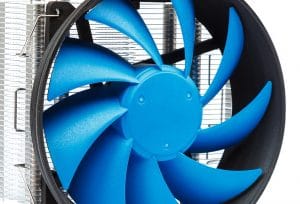 The challenge of meeting the more advanced electrical cooling needs of modern technological applications has always been a tough one to overcome for most companies. However, this challenge has become much easier with the help of more innovative cooling methods and solutions, such as heat exchangers that utilize advanced heat transfer principles. Today, many of the most advanced forms of technology, including those that are completely or nearly completely automated, rely heavily on the high-performance cooling capabilities of heat exchangers.
The challenge of meeting the more advanced electrical cooling needs of modern technological applications has always been a tough one to overcome for most companies. However, this challenge has become much easier with the help of more innovative cooling methods and solutions, such as heat exchangers that utilize advanced heat transfer principles. Today, many of the most advanced forms of technology, including those that are completely or nearly completely automated, rely heavily on the high-performance cooling capabilities of heat exchangers.
The growth of automation in different industries
The trend toward automation has been long in the making, and companies in every industry have taken advantage by implementing various forms of automated technology into their processes. The goal is to help streamline operations, particularly redundant ones, to boost their overall efficiency and productivity. As the trend has grown, companies have utilized automated solutions for increasingly more applications, from core manufacturing and production line processes to administrative systems that automate key workflows, and much more. While the capabilities of automated technology have proven invaluable, they have also created a significant challenge in meeting their more advanced electrical cooling needs.
The unique challenges to cooling automated tech
Cooling advanced technological solutions is a challenge for many reasons. When companies rely on older cooling solutions, such as air conditioners and air compressors, the costs associated with maintaining these solutions can often become exorbitant. Implementing newer technologies is made more efficient when those technologies are powered by more innovative cooling applications, such as heat exchangers that are designed to naturally and continuously transfer waste heat in a tightly controlled loop. Without having to rely on cold air like older solutions, heat exchangers provide an optimal, efficient, and nearly automated answer to keeping high-performance automated technologies properly cooled.
The nearly automated capabilities of heat exchangers
Modern cooling solutions like heat exchangers are designed with the purpose of streamlining electrical cooling and making the process a more efficient and cost-effective one. This is possible largely due to the advanced way in which heat exchangers absorb and transfer waste heat continuously. Using an eco-friendly cooling fluid that rapidly absorbs the waste heat then transfers it to a cooler area to dissipate it, heat exchangers are able to create heat transfer loops that prevent waste heat from remaining still long enough to accumulate into harmful heat pockets.
For more information about what role thermal management has played in automation, call Noren Thermal Solutions in Taylor, TX, at 866-936-6736.







